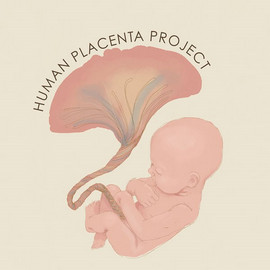The Human Placenta Project: Placental Structure and Function in Real Time

May 27–28, 2014
Sponsor/Co-Sponsor(s)
NICHD
Agenda
May 27, 2014
| 7:30 a.m. | Goals for Human Placenta Project (HPP) and Workshop
Alan Guttmacher and Cathy Spong
|
|---|
| | |
|---|
| | |
|---|
| 7:40 a.m. | Introductions
Alan Guttmacher and Cathy Spong |
|---|
| | |
|---|
| | |
|---|
| 8:00 a.m. | Overview of Placental Formation and Structure (PDF - 3.2 MB)
Graham Burton
|
|---|
| | |
|---|
| | |
|---|
| 8:45 a.m. | Maternal Placental Syndromes: Conditions Due to Placental Abnormalities (PDF - 1.9 MB)
George Saade
|
|---|
| | |
|---|
| | |
|---|
| 9:30 a.m. | Current Methods for Assessing Placental Development and Function and Their Limitations (PDF - 3 MB)
Yoel Sadovsky
|
|---|
| | |
|---|
| | |
|---|
| 10:15 a.m. | Break |
|---|
| | |
|---|
| | |
|---|
| 10:30 a.m. | Panel Discussion: Shared Pathophysiological Processes That May Be Assessed Using Knowledge and Technologies From Other Fields
(6-Minute Presentations on the Specific Dysfunction and Its Relevance, Followed by Discussion) |
|---|
| | |
|---|
| | |
|---|
| 11:15 a.m. | Lunch |
|---|
| | |
|---|
| | |
|---|
| 12:00 p.m. | Breakout Sessions: Shared Pathophysiological Processes that may be Assessed Using Knowledge and Technologies from Other Fields - Breakout 1: Anatomy and Tissue Structure: Led by Susan Fisher
- Breakout 2: Utero-Placental Perfusion: Led by Kathleen Schmainda
- Breakout 3: Tissue and Cellular Metabolism (e.g., Nutrient Transfer, Biochemistry, -omics): Led by Nick Illsley
- Breakout 4: Immunology, Inflammation (e.g., Graft vs. Host Interactions): Led by Gil Mor
Charge to Breakout Sessions: - What functions are important to evaluate in real time?
- What are the current state-of-the-art approaches in obstetrics for assessing these processes?
- How are these processes assessed in other fields?
- What technologies might be applicable to HPP?
- What technologies need to be developed to address the pathophysiologic process?
|
|---|
| | |
|---|
| | |
|---|
| 2:00 p.m. | Breakout Groups Report Back, Followed by Discussion |
|---|
| | |
|---|
| | |
|---|
| 3:30 p.m. | Panel Presentation: Applying Technologies To Study the Placenta in Real Time: Currently Utilized Imaging Technologies—How To Optimize or Further Their Use
(6-Minute Presentations, Followed by Discussion) |
|---|
| | |
|---|
| | |
|---|
| 4:00-6:00 p.m. | Breakout Sessions: Currently Utilized Imaging Technologies—How To Optimize or Further Their Use - Breakout 1: Ultrasound: Led by Alfred Abuhamad
- Breakout 2: MRI: Led by John Sled
Charge to Breakout Groups: - What are the "adjacent possible" to application in obstetrics for each technology?
- What technologies might be applicable to HPP?
- What technologies need to be developed to address the pathophysiologic process?
- Describe what needs to be done to develop/stimulate/
encourage/facilitate this area to move forward to understand human placental structure and function in real time. - Are there initial steps that must first occur (e.g., technologies to develop)?
|
|---|
| | |
|---|
| | |
|---|
| 6:00 p.m. | Adjourn |
|---|
May 28, 2014
| | |
|---|
| 8:00 a.m. | Breakout Groups Report Back: Currently Utilized Imaging Technologies—How To Optimize or Further Their Use |
|---|
| | |
|---|
| | |
|---|
| 9:00 a.m. | Panel Presentation: Emerging or Potentially Promising Technologies—How To Develop and/or Optimize Their Use
(6-Minute Presentations on the Technology, Followed by Discussion) |
|---|
| | |
|---|
| | |
|---|
| 10:15 a.m. | Breakout Sessions: Emerging or Potentially Promising Technologies—How To Develop and/or Optimize Their Use - Breakout 1: Nanotechnology (e.g., Nanorobots, Intravascular Sensors): Led by Erik Rytting
- Breakout 2: Biochemical Techniques: Led by Carolyn Ott
- Breakout 3: High-Throughput –omics: Led by Diana Bianchi
- Breakout 4: Systems Science, Computational Biology: Led by Brian Cox
- Breakout 5: Data Management (e.g., Sharing, Manipulation, Reconstruction): Led by Peter Basser
Charge to Breakout Groups: - What are the "adjacent possible" to application in obstetrics for each technology?
- What technologies might be applicable to HPP?
- What technologies need to be developed to address the pathophysiologic process?
- Describe what needs to be done to develop/stimulate/ encourage/facilitate this area to move forward to understand human placental structure and function in real time.
- Are there initial steps that must first occur (e.g., technologies to develop)?
|
|---|
| | |
|---|
| | |
|---|
| 12:30 p.m. | Lunch |
|---|
| | |
|---|
| | |
|---|
| | |
|---|
| 1:30 p.m. | Breakout Groups Report Back, Identifying More Specific
Targets for HPP Phase I |
|---|
| | |
|---|
| | |
|---|
| 3:15 p.m. | Design and Develop the HPP "Roadmap"
Alan Guttmacher and Cathy Spong |
|---|
| | |
|---|
| | |
|---|
| 4:15 p.m. | Wrap Up and Next Steps
Alan Guttmacher |
|---|
| | |
|---|
| | |
|---|
| 4:30 p.m. | Adjourn |
|---|
Return to The Human Placenta Project: Placental Structure and Function in Real Time main page.

 BACK TO TOP
BACK TO TOP